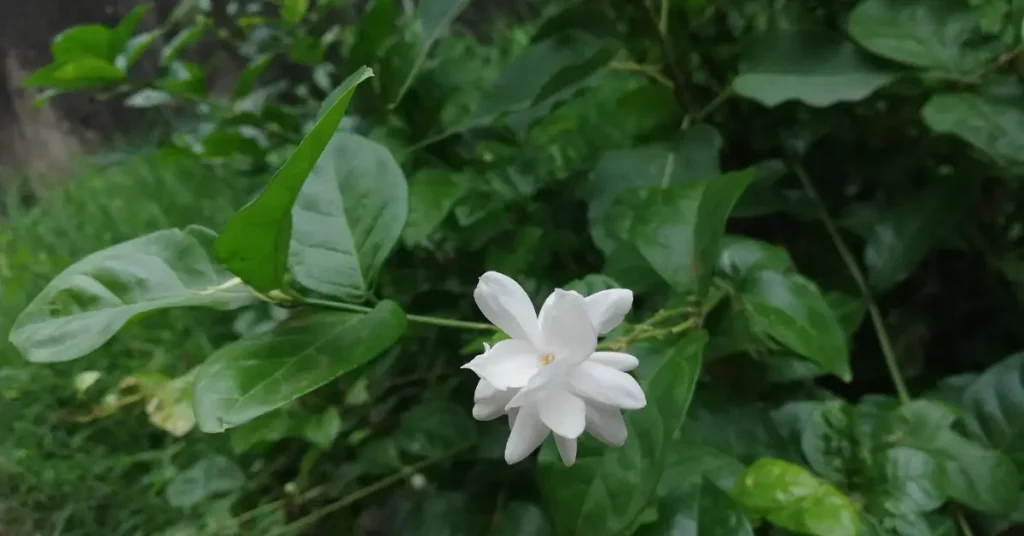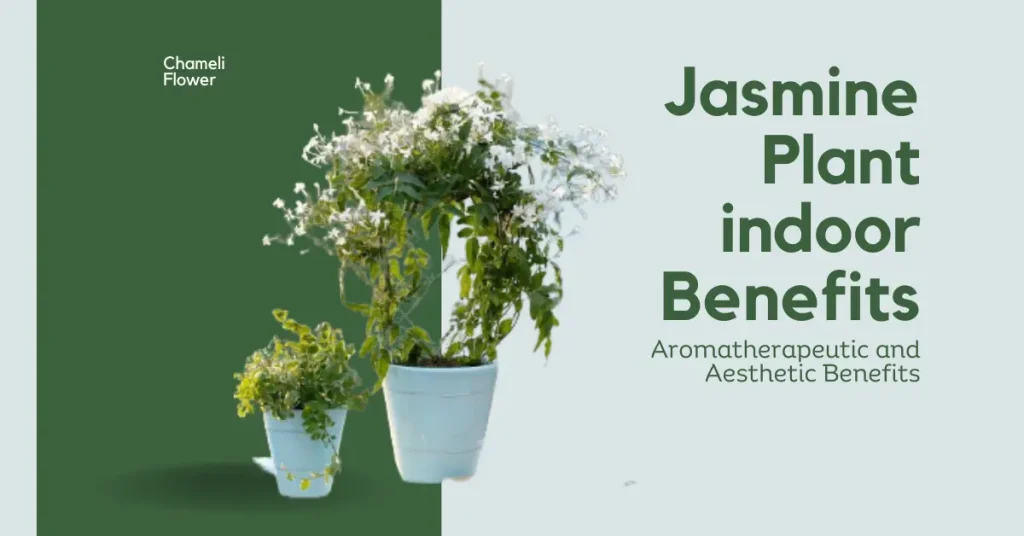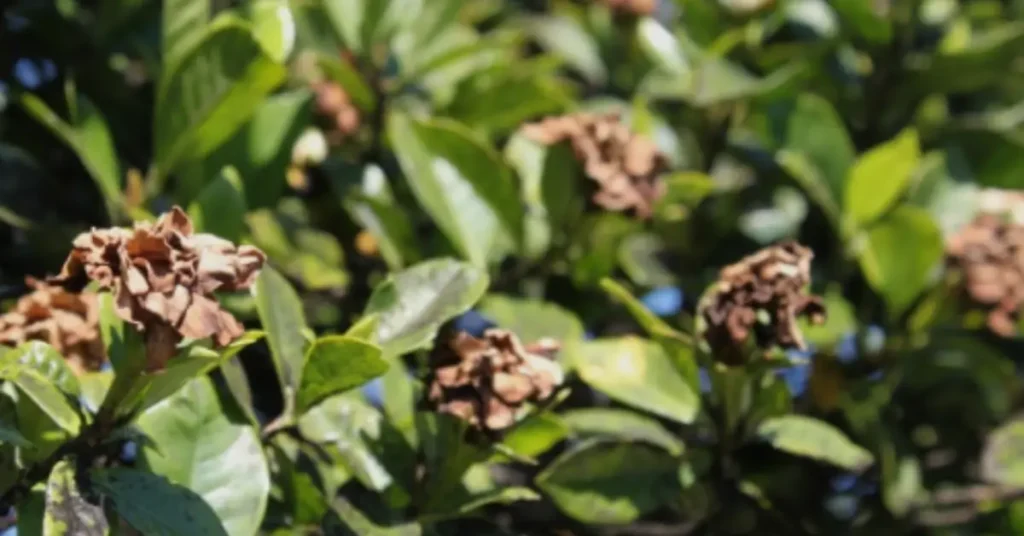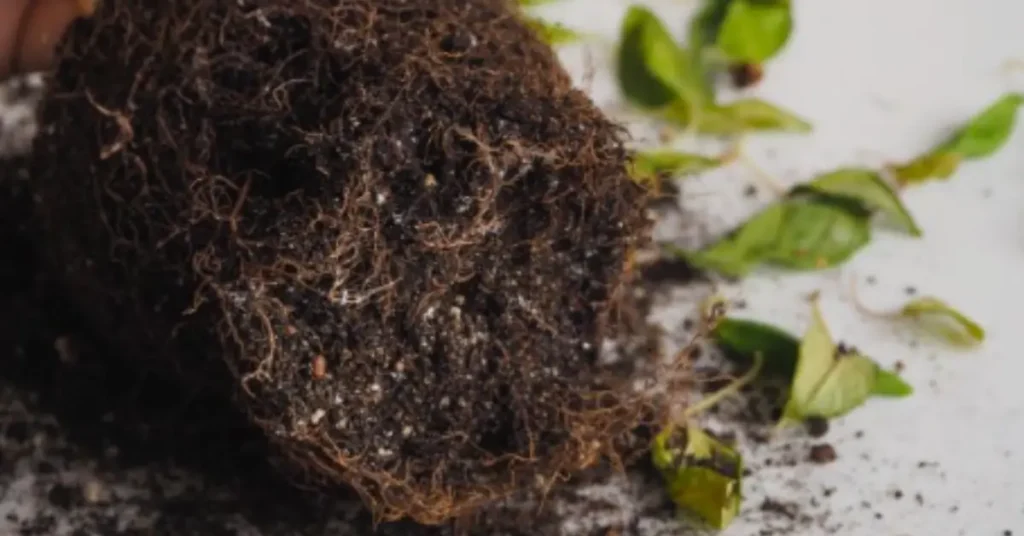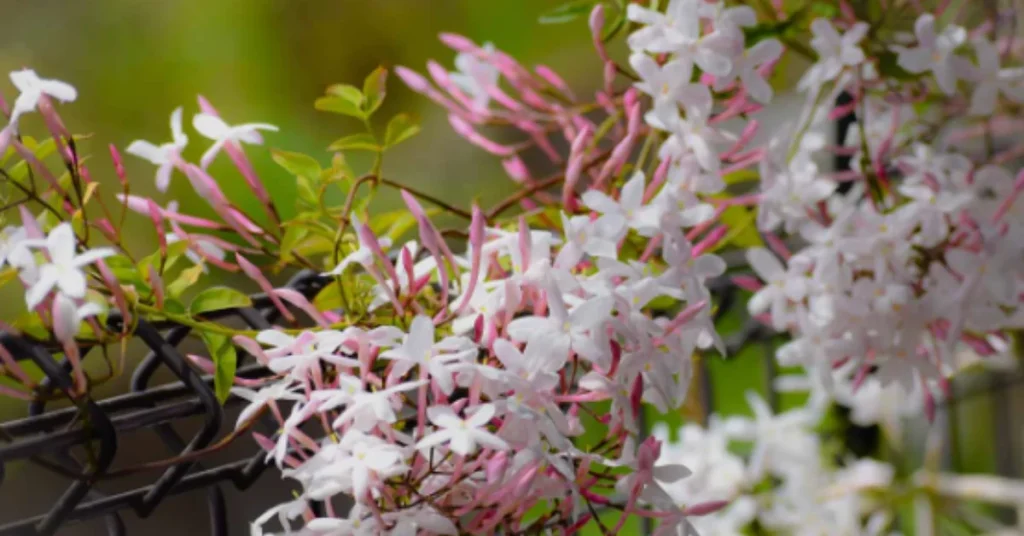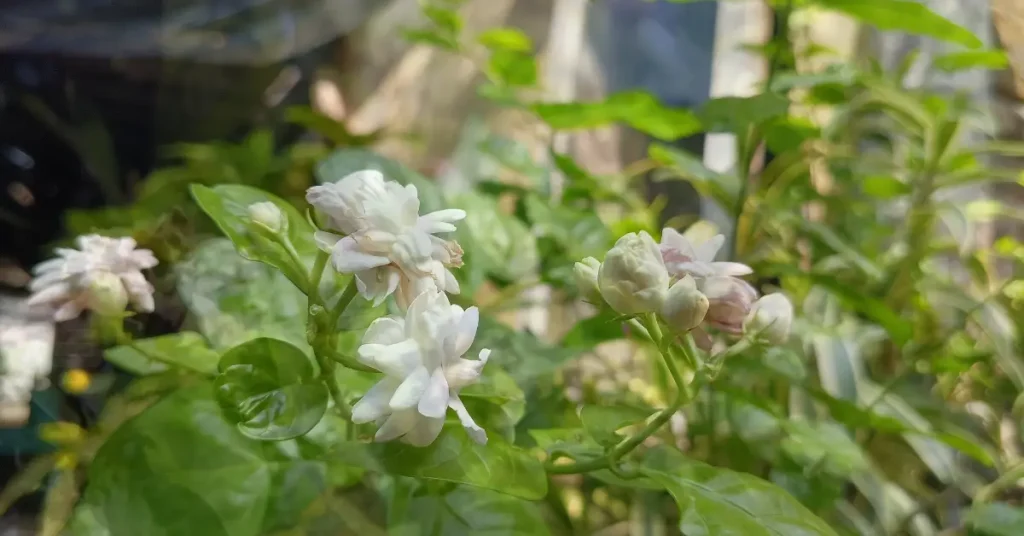Star Jasmine As Ground Cover is An Excellent Option
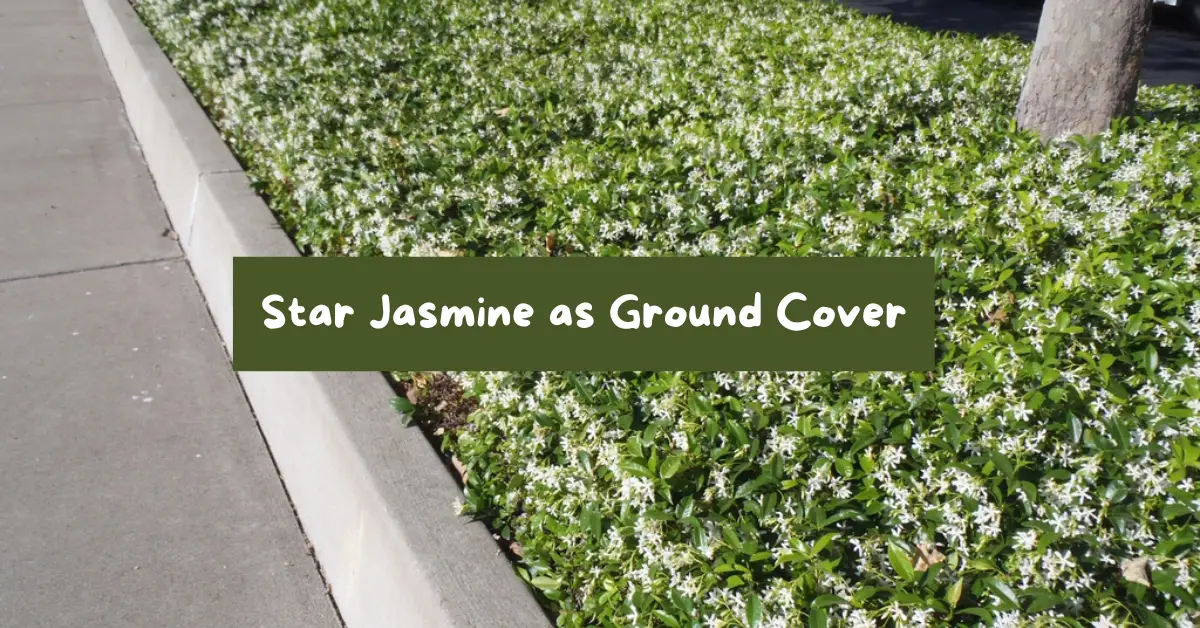
Ground covers play an important role in landscaping and gardening, enhancing a space as well as providing practical benefits such as soil stabilization and weed suppression. As a ground cover option, Star Jasmine (Trachelospermum jasminoides) stands out for its versatility, aesthetic appeal, and hardiness. I have witnessed many gardeners considering this elegant to their landscapes, fragrant white flowers and glossy green foliage.
Star jasmine can be trained to climb trellises, walls, fences, and it can also be used as a ground cover. In horizontal growth, it forms dense mats of foliage that can cover large areas quickly. In full sun or shade, Star Jasmine thrives and does well under trees.
When grown on fences and walls, Star Jasmine can create a thick ground cover that is great because, unlike most climbers, it does not become rampant and keeps a vegetative cover on the ground. It looks great, clipped into a formal topiary shape over a frame.
Why Star Jasmine as Ground Cover?
Star Jasmine as ground cover performs excellent for several reasons:
Aesthetic Appeal: Providing a rich green backdrop, the plant’s glossy leaves are adorned with abundant white, star-shaped flowers. The combination of its rich green leaves and contrasting white flowers adds a striking visual appeal to your landscape.
Versatility: A variety of garden styles can be accommodated with Star Jasmine, including formal gardens, cottage gardens, Mediterranean landscapes, and Modern gardens.
Durability: As long as it’s established, Star Jasmine is fairly drought-resistant, pest-resistant, and can handle moderate foot traffic.
Easy to Maintain: Choosing the star jasmine makes it ideal for gardeners who want a beautiful, low-maintenance ground cover.
Ideal Growing Conditions
Even though Star Jasmine is adaptable, it needs specific conditions to flourish.
Climate
Star Jasmine grows best in USDA hardiness zones 8-10. Although it can handle some frost, it’s best in warm, temperate climates. When growing in colder regions, it is best grown as an annual or in containers that you can bring inside for the winter.
Sunlight
Star jasmine will thrive in full or partial sun, but if you want maximum flowering potential, make sure it gets enough light. It will bloom best if it gets at least eight hours of sunlight daily.
Soil
Although star jasmine can tolerate different soil conditions, it prefers amended, well-drained soil with a slightly acidic pH of 6.0-7.0. To improve drainage, add compost or other organic matter before planting.
Watering
Regular watering is best for plants. Water the soil when it feels dry on top. A prolonged heat wave or a dry spell requires more frequent watering. Once established, Star Jasmine is relatively drought-tolerant.
Avoid waterlogging, as it can cause root rot.
Planting Star Jasmine as a Ground Cover
Site Selection
The right location is crucial for the growth of Star Jasmine. Plants need at least four to six hours of direct sunlight per day to thrive, and they can tolerate some shade as well. Shade can be tolerated, but insufficient light can lead to reduced flowering and slower growth.
Soil Preparation
For optimal growth, prepare the soil before planting. It thrives in soil that ranges in pH from 6.0 to 7.0 and is somewhat acidic to neutral. To increase drainage and fertility, clay soils and compacted soils may require an organic matter amendment, such as compost or well-rotted manure.
Your soil’s specific needs can be determined by a soil test. I always recommend soil test.
Planting Process
- Space Star Jasmine plants 3 to 4 feet apart when planting as a ground cover. It allows the plants to spread out over time and cover the entire area. If you want faster coverage, you can plant them closer together, but you may need to prune them more frequently.
- Make sure the holes you dig are slightly bigger than the plant’s root balls. Plants should be inserted at the same depth as in their containers. Fill the holes with soil and press down gently to eliminate air pockets.
- Plants need water to establish themselves after planting. Keep the soil consistently moist during the first few weeks. Once established, Star Jasmine needs less water.
Propagation Methods
Several propagation methods are available for Star Jasmine, including seedlings, cuttings, and layering.
- Seed Propagation: Although Star Jasmine can be grown from seed, the process is slow and uncommon. In a well-draining soil mix, the seed should be sown and kept moist until it germinates, which might take several weeks. It can take a few years for seeds to sprout into fully grown plants that bloom.
- Cuttings: Star Jasmine is commonly propagated through stem cuttings. In the early summer or spring, take four- to six-inch cuttings from healthy, non-flowering stems. Prior to planting in a spot with soil that drains well, make sure the cut end has been soaked in rooting hormone. You should keep the cuttings in a warm, humid environment for a few weeks until roots begin to develop.
- Layering: Another effective method of propagation is layering. It involves covering a portion of the low-growing stem with soil while leaving the tip exposed and bending it to the ground. Once the buried section of the stem develops roots, it can be transplanted after being severed from the parent plant.
Care and Maintenance
Watering
Regular watering is essential during the first growing season for Star Jasmine, once established ,it is relatively drought-toleran. Make sure the soil dries out a bit between waterings by deeply watering once or twice a week. Living in a hot, dry area could need you to water your plants more frequently.
Fertilization
Well-amended soil is ideal for planting star jasmine, which requires little or no supplemental fertilizer. Fertilize only after the roots have established themselves well. Early in the spring, use a slow-release fertilizer. Make sure you don’t over-fertilize your plants, which may result in more foliage and fewer flowers. Each spring, apply a thin layer of compost around plant bases to feed plants, control weeds, and maintain moisture. Nutrient deficiencies may lead to yellow leaves and other symptoms.
Pruning
As a ground cover, Star Jasmine requires regular pruning. Pruning helps control its spread and promotes a denser growth habit. Immediately after flowering, shape and prune plants.
Plants may need pruning more than once during summer or early fall due to their rapid growth rate. Remove any dead or damaged branches and any overgrown stems.
Mulching
One of the finest methods for controlling soil temperature, weed suppression, and moisture conservation is to apply a layer of mulch around the base of the plants. Cover the plants with organic mulch, such as wood chips or bark, 2 to 3 inches thick. Be careful not to cover the stems directly.
Benefits of Using Star Jasmine as Ground Cover
Ground covers such as Star Jasmine offer several advantages, which makes them valuable additions to gardens.
Erosion Control
Because Star Jasmine grows densely, it stabilizes soil, makes it a great plant for slopes or areas prone to erosion. The extensive root system anchors the soil, reducing soil loss and runoff.
Controlling Weeds
Star Jasmine forms a thick mat of foliage once it has been established, which shades out weeds, reducing the need for manual weeding or the use of herbicides in a garden.
Aesthetic Value
Glossy, evergreen leaves provide year-round interest, and white flowers add seasonal beauty and sweet fragrance. It enhances the visual appeal of borders, pathways, or large expanses of bare soil.
Wildlife Attraction
Your garden will be more diverse because the fragrant flowers of Star Jasmine attract pollinators such as bees, butterflies, and hummingbirds.
Tolerance to Heat
A reliable groundcover option for regions with hot summers, Star Jasmine is well-suited to hot climates and tolerates high temperatures.
Landscape uses
- Plant Star Jasmine along pathways and garden borders. You will enjoy walking through your garden because of its neat, defined edge and pleasant fragrance.
- Star Jasmine’s deep roots and spreading habit make it an ideal plant for preventing slope erosion. Because the plant covers large areas quickly, it is an excellent solution for stabilizing soil on hillsides.
- In addition to being used as a ground cover, Star Jasmine can also be grown in containers or hanging baskets. You can train it to trail over the edges of a container to create a cascading effect. It is particularly useful for small gardens and patios where space is limited.
Star Jasmine vs Other Ground Covers
Star Jasmine is not the only player in the ground cover game. The options are as diverse but how does star jasmine measure up against its competitors in the world of ground covers?
Let’s explore with me:
Versus Ivy: One of the popular ground cover is English ivy, but the problem is that it can be invasive and difficult to control. Star Jasmine is generally less aggressive and provides evergreen cover.
Versus Vinca Minor: Similarly spreading, Vinca minor, known as Periwinkle, is a shade-tolerant ground cover. However, Star Jasmine has additional advantages, such as fragrant flowers and greater heat tolerance.
Versus Creeping Thyme: Creeping thyme is a fragrant, flowering ground cover that grows well in sunny spots. In contrast to Star Jasmine, it is much lower to the ground and does not provide the same level of coverage or erosion control.
To Sum Up
For home gardeners, Star Jasmine is an attractive and versatile ground cover. From its glossy evergreen foliage to its fragrant, star-shaped flowers, this plant complements a wide range of landscape settings. The hardiness and low maintenance requirements make it the perfect ground cover for anyone looking for something reliable and long-lasting in their garden.
Whether you’re looking to cover a slope, create a lush border, or add fragrance to your garden, Star Jasmine has you covered. You will enjoy years of enjoyment and contribute to the health and beauty of your landscape with proper care and attention.

I am Yasir Riaz, an Agronomist for more than a decade. Helping local farmers and Gardeners to improve their crops and Gardens and overall productivity. In addition to my work in agriculture, I have also delved into the digital world as an SEO writer and blogger. Through my blog, I aim to educate and inspire others about the Chameli Flower (Jasmine).

